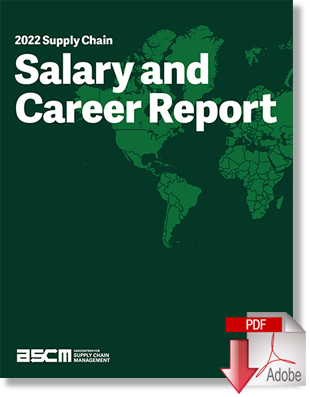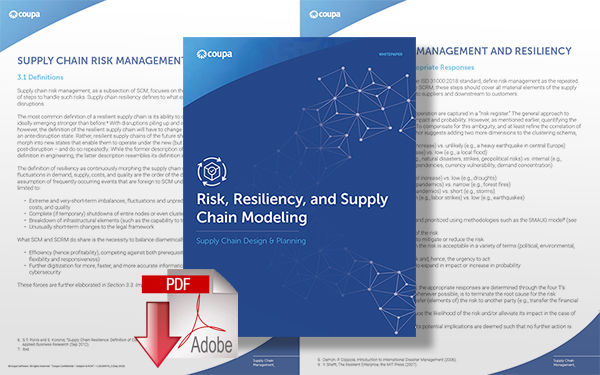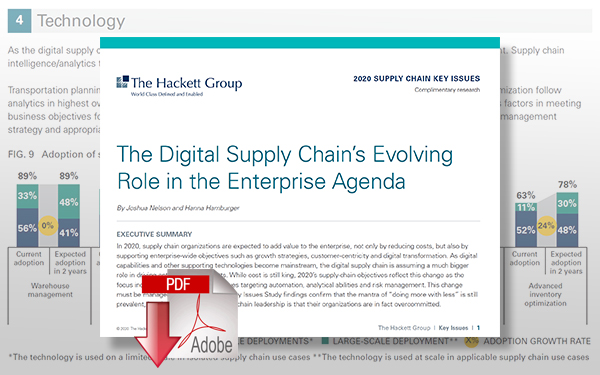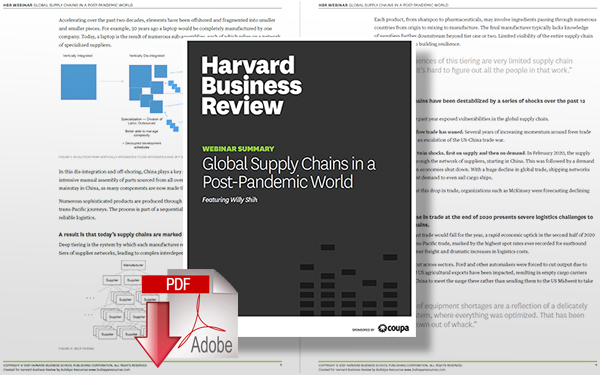Stressed-Out Supply Chain Managers Looking Elsewhere for Career Development

According to various reports, the separation rate increased by 28% last year, and supply chain ‘burnout’ spurred people to search for higher-paying jobs.
Supply Chain Managers Looking Elsewhere
As reported by Bloomberg, supply chain managers quit their jobs last year at the highest rate since at least 2016 due to a mix of burnout and a desire for fatter paychecks.
The high rate of turnover aligns with the escalation of supply-chain woes in 2021. The pandemic led to shuttered manufacturing plants, backed-up ports, and rapidly increasing transportation costs. Those headaches have largely fallen to supply-chain managers to sort out, making their jobs far tougher - but also more lucrative.
“With increasing opportunities against the backdrop of the supply chain crisis, it comes as no surprise that supply-chain managers have increasingly sought out greener pastures,” said Kory Kantenga, a senior economist at LinkedIn.
LinkedIn, a division of Microsoft Corp., calculates turnover by analyzing member profiles to determine the number of people who left their jobs each month. The figure is compared with the average for 2016, which LinkedIn calls the “separation rate.” For supply-chain managers, the average separation rate increased by 28% from 2020 to 2021, according to data compiled for Bloomberg. That’s the highest since LinkedIn started tracking the data five years earlier.
Burnout is part of the equation, Kantenga said. New opportunities are also playing a role, in part because ongoing supply-chain disruptions are fueling demand for professionals who can deal with them.
Rising Vacancies
Job openings for supply chain and logistics managers have surged
Source: ZipRecruiter - Includes the average number of open job postings at any time during the month for the job titles
The number of openings for supply-chain managers on ZipRecruiter’s Website more than doubled between January 2020 and March of this year, both because companies created more positions to deal with the crisis and because labor shortages gave workers more leverage to switch jobs, said Julia Pollak, the company’s chief economist.
Read 38th Annual Salary Survey: Salaries Begin to Rebound
Since Covid-19 emerged, shoppers around the world have faced empty shelves and shipping delays. Companies were forced to adapt to unpredictable demand, a race to secure scarce materials, and the stress of finding workers as their staff flocked to other jobs or fell ill. And then they had to find enough trucks to get their products out the door. The crisis raised the profile of supply-chain jobs, and the field became a popular major for business-school students.
The pandemic triggered a breakdown in “lean manufacturing,” the drive to lower costs that big companies had adopted in the decades prior. In practice, it meant that supply-chain managers had access to just enough staff, materials, and trucks to fill average workloads. The model collapsed when Covid-19 brought in unexpected ebbs and flows in orders and hampered access to critical supplies, putting planners on a 24/7 fire-drill mode.
“So much became the exception versus the rule,” said Michael Martin, a supply-chain director in the Philadelphia suburbs who has held a variety of roles at companies such as Stanley Black & Decker Inc. and Essity AB over three decades. He took a new job at Blue Yonder during the pandemic.
“I think that’s where a lot of the stress came from. We can’t solve problems as easily as we used to.”
Outdated Supply Chain Processes
The supply crunch hasn’t been limited to products consumers can hold in their hands. It has also affected tasks like data collection, which contribute to the bottlenecks experienced by businesses and shoppers.
Madhav Durbha, vice president of supply-chain strategy at Coupa Software Inc., said part of the problem is outdated processes. Manual and labor-intensive operations force employees to spend hours every week doing repetitive tasks that could be automated for greater efficiency and accuracy, allowing people to focus on more rewarding work.
For example, Durbha said 60% to 70% of an analytics employee’s time can be spent gathering data, while only 30% to 40% is dedicated to analyzing the figures and providing insights.
Read the Article: 3 Things Keeping Supply Chain Leaders Up At Night
A survey released last year by recruitment firm DSJ Global showed that more than half of supply chain and procurement professionals expected their paychecks to increase in the next 12 months. Higher pay was the No. 1 reason US workers were attracted to new jobs.
Supply-chain skills are in such high demand these days that job seekers can afford to be picky, said Emily Prendergast, an executive director at DSJ. She estimates that 65% to 70% of supply-chain professionals are open to learning about new job opportunities within six months of getting their current position.
“Candidates are less willing to go to a firm that is outdated in systems or outdated in general processes,” Prendergast said.
“They don’t want to be as stressed out as they have been over the last few years.”
Supply Chain Salary and Career Report Shows Minimal Impact from the Great Resignation
The Association for Supply Chain Management (ASCM) released the findings of its 2022 Supply Chain Salary and Career Report. The annual survey found supply chains were minimally impacted by the Great Resignation. According to the report, 14% of respondents found a new job, up only 2% from last year. The data also revealed career satisfaction remained exceedingly high despite the continuous strain of supply chain disruptions.
“This past year brought continued uncertainty across all industries and supply chain professionals were once again under tremendous pressure to keep pace with a never-ending stream of disruptions,” said ASCM CEO Abe Eshkenazi, CSCP, CPA, CAE.
“Amid all these global challenges, it’s reassuring to see supply chain professionals remaining resilient and committed to their vital work and this dynamic industry.”
Flexibility and Strong Salaries
As many industries struggle with balancing return-to-work policies, supply chain professionals are thriving in the hybrid world created by the pandemic. According to this year’s report, two-thirds of supply chain professionals work in a hybrid or permanent work-from-home setting, demonstrating the flexibility that many in today’s workforce seek when evaluating career options. Salaries and compensation continue to rise with survey respondents reporting an average of a 9% pay increase. Overall, total compensation has increased by an average of 12%, with the median package being just under $100,000. From a benefits standpoint, the report showed that paid time off is generous within the industry with nearly half (48%) of supply chain professionals reporting receiving four weeks or more of paid vacation.
Pay Gap Continues to Narrow
For the second year in a row, the report showed that women under 40 earned more than their male counterparts in supply chain roles. Additionally, the overall gender pay gap among supply chain professionals continues to narrow with the upward growth of women in the industry. This year’s report found women aged 40 to 49 narrowed the pay gap down from 15% in last year’s report to 8% this year. While this shows growth for women within the industry, the report found an overall gap between women and people of color at privately held companies. At publicly traded companies, salaries are more equitable for both women and people of color. Eshkenazi added;
“This year’s data is encouraging as we work to attract, develop and retain more diverse supply chain talent but these numbers also demonstrate there is more work to be done. I hope all organizations can redouble efforts to eliminate pay gaps based on gender and race.”
Additional Key Findings from ASCM’s Survey include:
- Professional development pays off: Those with at least 1 APICS certification earn 25% more salary than those with no certification at all.
- Strong salaries: Respondents reported a median salary of $96,000 (base salary and additional compensation).
- Quick job placements: Eighty-one percent of new graduates found their job in the supply chain industry in three months or less. For professionals already in the industry, 67% found a new job within three months of beginning their search.
More Resources
Continuous Design Outsmarts Disruption: A Blueprint for Supply Chain Resiliency
In this ebook, we discuss how continuous design can reduce risk, improve resilience, and turn supply chain challenges into a competitive advantage. Download Now!
Risk, Resiliency, and Supply Chain Modeling
This paper first examines why existing supply chain management practices do not naturally develop resilient supply chains and why some of the existing supply chain processes are not suitable for addressing such risks and required responses. Download Now!
Digital Supply Chain’s Evolving Role in the Enterprise Agenda
The Hackett Group 2020 Key Issues Study findings confirm that the mantra of “doing more with less” is still prevalent, but the top concern of supply chain leadership is that their organizations are in fact overcommitted, AI analytics to enable a more agile supply chain. Download Now!
Global Supply Chains in a Post-Pandemic World
In this webinar summary, Willy Shih, Robert, and Jane Cizik Professor of Management Practice in Business Administration at Harvard Business School share insights into how global supply chains came to be the way they are and how their vulnerability has been revealed through numerous crises. Download Now!
More Resources from Coupa
Related Article: 3 Things Keeping Supply Chain Leaders Up At Night
Article Topics
Coupa News & Resources
How Microsoft Improved ESG & Sustainable Spending Working Together with Community.ai Capabilities Supply Chain Agility in an Ever-Changing World How Sourcing Can Respond in Dynamic Markets to Drive Supply Chain Value Build Resilience in Supply Chains by Modeling & Designing Multiple Demand Futures Beyond Disruptions: Building the Next Generation of Resilient Supply Chains 6 Truths About Business Spend Management Technology 5 Ways Supply Chains Can Flourish in an Inflationary World More CoupaLatest in Business
Biden Gives Samsung $6.4 Billion For Texas Semiconductor Plants Apple Overtaken as World’s Largest Phone Seller Walmart Unleashes Autonomous Lift Trucks at Four High-Tech DCs Plastic Pollution is a Problem Many Companies are Still Ignoring Luxury Car Brands in Limbo After Chinese Company Violates Labor Laws 80% of Companies Still Unsure How to Best Leverage AI, Study Finds Ranking the Best Countries for Private Business in EMEA More Business






















